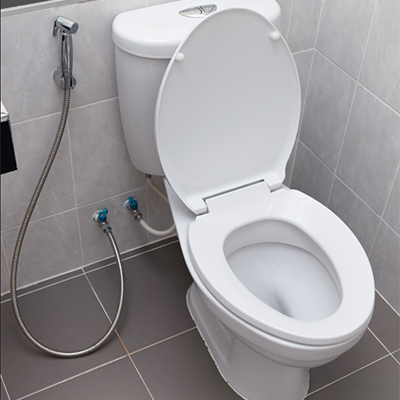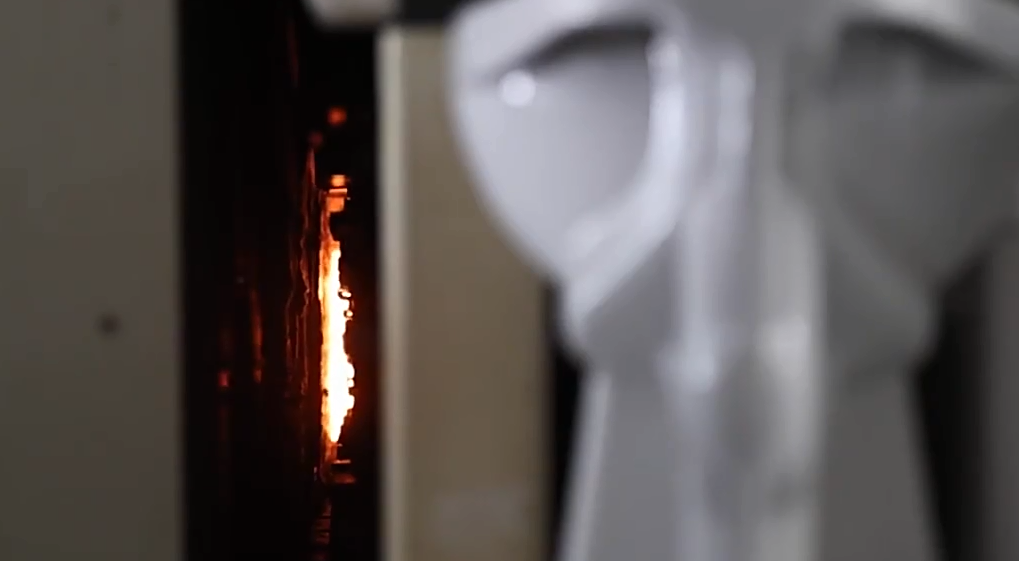Toilet is a fixture that is an integral part of every household. Its importance cannot be overstated, as it serves as a hygienic device that keeps us clean and healthy.
Some friends may wonder: How is such a complete piece of equipment produced? The toilet might seem like a simple household appliance, but its production involves complex processes that require expertise and skill. Each step requires precision and attention to detail to ensure that the final product is high-quality and reliable.
In the following content, we will discuss the production process of the toilet together. From the perspective of raw materials, equipment, production and testing steps are introduced to help everyone better understand.

Toilet-help to keep us clean and healthy
1.Material
The toilet is made of clay material. After the different clay materials are fully mixed, they are poured or sprayed, and then fired at high temperature to achieve a certain strength and smoothness.
The material of the body is a mixture of ball clay, porcelain clay, feldspar and sand. Ball clay and porcelain clay can enhance the strength of the product; Feldspar is added to the kiln body to make the body melt at a lower temperature. Sand makes the toilet stronger. The average toilet can hold at least 450 kilograms (about 1,000 pounds). These ingredients are ground and mixed with water to make a paste.
Glaze is like a pigment that can be used to color the toilet and improve surface strength. After firing, the glaze will become smooth and strong.
2.Designing and Moulding
In the first step of toilet manufacturing, the toilet should be designed. First, designers often make CAD drawings with dimensions. In this picture, all the important details will be shown. Including the shape of the inner trap, rough in, the installation of the anchor screw, shape of the bowl and tank, etc.
Once the drawing is done, the modeler will make a model out of plaster. The size of this model is usually 12% larger than the size of the required toilet. Because the toilet shrinks during firing. Each mold made of plaster can turn the model 90-100 times. Therefore, the factory will make many molds to ensure that the product can be mass-produced.

Toilet design
3.Body and glaze preparation
First, workers put sand in a ball mill and grind it with water to make it fine. Ball clay, porcelain clay and slender stone powder are then mixed in a sand mixer. Their mixture will be mixed with water in a certain proportion. In this process, the flow rate and density of the materials will be tested by professionals to ensure that they meet the standards for use. The prepared strips are sent to the casting process.
The glaze material is then put into a ball mill for grinding and adjusted to different colors as required. Before moving on to the next process, the tester will perform a performance test on the glaze. The slider is highly viscous liquid. Only glazes that meet the standards will be used in the formal production process.
4.Casting:
Pour the slider into the mold and let the slider stay in the mold for a few hours to get the basic shape of the toilet. Excess sliders will be drained from the mold. Depending on the model, the thickness of the piece should be around 9 to 13 mm. After hours, the embryo is dry and ready to be removed from the mold. Toilets at this stage are called green ware. The green ware will be left to dry in the open air. Until it has a certain strength, and the water content reaches a certain standard

Toilet waiting to dry
5.Drying:
The Green ware is loaded in a trolley and then pushed to the drier. The wares are placed in a 90 degree Celsius drier for 8 to 10 hours. Once the green ware dried the ware is tested for moisture content. The moisture content after drier should be less than 0.5%. These pieces then sent to the spraying area.
6.Spraying:
The green clothes will be transported to the dryer and placed in the dryer at 90 degrees Celsius for 8 to 10 hours. Once the celadon is dry, it is tested for moisture content. The moisture content after drying should be less than 0.5%. The debris is then sent to the spray area. Most factories use manual glazing. But modern factories use machinery for glazing. The glaze is placed in a specific machine and sprayed using a robotic arm. The advantage of this is that the glaze distribution will be more even and at the same time more efficient.
7.Firing:
The toilets are stacked in a moving machine. This machine takes the toilets to the firing area. The toilet is fired to a temperature of 1200 degree Celsius. Once the toilet fired it get the strength to withstand weight minimum of 400 degree Celsius.

Toilet kiln
8.Testing:
In order to ensure quality and standards, toilets are tested during production and after firing. Before firing, workers will conduct a preliminary inspection on the embryo with kerosene, and cracks and depressions will be easily detected under strong light. After firing, a visual inspection is first carried out to ensure that no defective parts are sent to the customer. Then a leak test, a flush test, a vacuum test, and a smoke test are performed to ensure the quality of the toilet.
A complete ceramic toilet product will go through dozens of large and small processes from design to delivery to customers. In this process, standardized, mechanized production will ensure that customers get satisfactory products. If you want to know more about us, please feel free to leave a message. Looking forward to sharing more with you.
